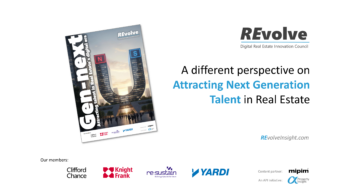Artificial intelligence (AI), or machine-learning, is rapidly moving from research labs to real world applications. Harnessing its power in a very practical way for energy management within commercial buildings is just one of its potential benefits. Hammerson has been working with a start-up – Grid Edge – to do just that. Grid Edge was spun out of Aston University after being founded by three friends from Aston’s Energy Research Institute. The company uses AI technology to empower customers, businesses and other organisations to make the most of their energy assets.
We have been working with Grid Edge at Bullring since 2016. After an extensive period of data gathering and monitoring, Grid Edge created a platform that allows us to actively manage Bullring’s grid energy demand for climate control on a day-ahead basis, whilst allowing for changes in footfall and weather.
This is one of the first times this technology has been used in a commercial setting and is a great example of applying the creative thinking and entrepreneurial talent that emerges from a research environment in a live commercial one.
Put simply, Grid Edge’s predictive AI technology is designed to give the Bullring Estate team foresight of their energy profile and the flexibility to shift the asset’s energy demand. This means we can move our demand to times of day when energy is at its cheapest and has the lowest carbon intensity and away from peak times. We can take pressure off the grid whilst using the building’s innate ability to hold its temperature to ensure visitors experience a comfortable environment. The value-add of the Grid Edge approach is that by combining our knowledge of up-coming events with the system’s knowledge of footfall patterns, weather events and how the building performs under specific circumstances, the team can set an energy strategy for the building for the day ahead that takes into account the characteristics of that particular day.
One of the most impressive elements of this smart tech is the user interface which transforms enormous quantities of data into a clear visualisation of what we can expect the temperature to be in the different zones of Bullring at any one time. This means we can set a comprehensive energy strategy each day, which can involve shutting systems down in areas we know will get low footfall and boosting it in areas that are going to be really popular.
All this is important because the cost and carbon intensity of the energy we use is not fixed; it changes depending on overall demand.
As with all these things, the focus has to be on the results, and this project has delivered, both environmentally and financially. For the six-week trial period when we were actively cooling the site, we created savings of around £23,000. This means we could be looking at an annual saving of as much as £100,000. And this is just at one of our destinations – the potential savings more broadly are significant.
The work at Bullring continues, and we have agreed to support Grid Edge to apply the system to Grand Central. As it’s over a major railway station the site has very different energy challenges, but the ultimate aim is the same – for our assets to become active participants in the energy market and significantly reduce our carbon footprint.
We have been pioneers in sustainability through the development of our Net Positive strategy – becoming the first real estate company globally to launch comprehensive net positive targets across both environmental and socio-economic impacts. By 2030, we aim to remove a total of 757,200 tonnes of carbon emissions from our operations, which is equivalent to the annual carbon emissions of 85,000 households.
Our partnership with Grid Edge is just one example of how we are using innovative new ideas and technologies not just to achieve our sustainability targets, but to also make our business as efficient and effective as possible.



